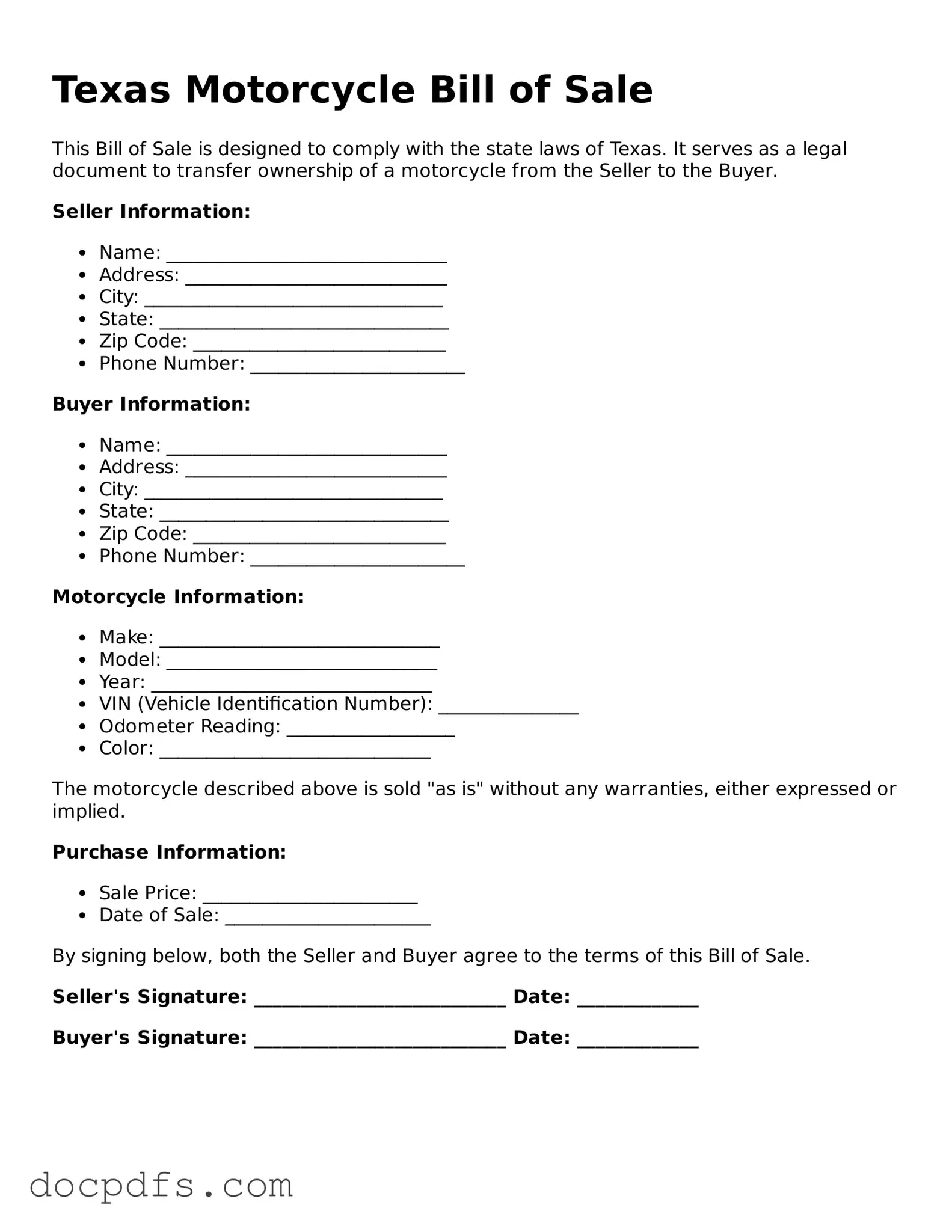In the vibrant state of Texas, where the open road beckons to motorcycle enthusiasts, the Motorcycle Bill of Sale form serves as a crucial document for both buyers and sellers. This form not only facilitates the transfer of ownership but also provides essential details that protect the interests of both parties involved in the transaction. Typically, it captures vital information such as the names and addresses of the buyer and seller, a description of the motorcycle—including its make, model, year, and Vehicle Identification Number (VIN)—as well as the sale price. Additionally, the form may include disclosures regarding the condition of the motorcycle, ensuring that the buyer is fully informed before making a purchase. It is important to note that while the Motorcycle Bill of Sale is not a legally mandated document in Texas, having one can significantly streamline the registration process and provide a clear record of the transaction. Furthermore, this form can serve as a protective measure against potential disputes, offering both parties peace of mind as they embark on their new journeys. Understanding the nuances of this form is essential for anyone looking to buy or sell a motorcycle in Texas, making it a fundamental aspect of the motorcycle ownership experience.
